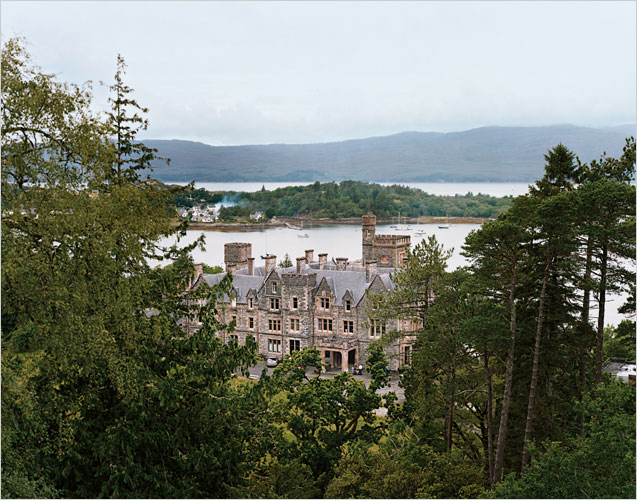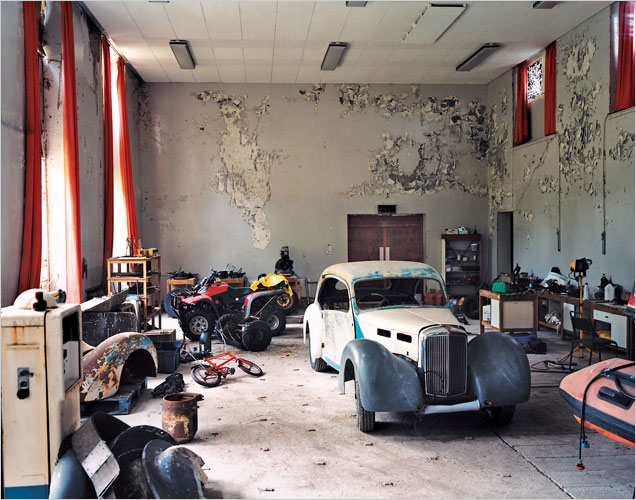 [Image: Duncraig Castle, Scotland; photo by Margaret Salmon and Dean Wiand for The New York Times].
[Image: Duncraig Castle, Scotland; photo by Margaret Salmon and Dean Wiand for The New York Times].There was a great article in The New York Times this weekend about an English family from Nottingham who purchased Duncraig Castle in Scotland, "set on 40 acres of forested land with its own train station, boathouse and two private islands." It is "a storybook maze of stone-clad turrets, square towers and steeply peaked gables set on a promontory at the edge of the woods overlooking the loch."
The article adds that the castle is "so large – 80 rooms – that a tour takes more than an hour, and it is impossible to remember where you’ve been or where any of the rooms are in relation to one another." Indeed, the building is "a warren of rooms – a design meant to help ward off drafts. In one room, you can actually squeeze behind a wardrobe and end up in the school addition."
As a brief aside, could you build a maze of outdoor rooms, each of them hoisted up on stilts throughout the northernmost extremes of the UK, so that they might interfere with, and thus stop, inclement weather? It'd be "a design meant to help ward off drafts" by trapping winds in little stop-boxes: like wind-shades, they'd help prevent certain storms from forming.
In other words, could you apply the internal climatic lessons of architecture – windows and doors like valves that stop drafts – to outdoor landscapes, using folly-like structures to control the weather?
You stumble on strange wooden folk-constructions in the forests of Bavaria and, not knowing what they are, tear them down; fierce storms begin that very evening, and you never – literally never – figure out what's the cause.
But those were anti-storm constructions, built over six hundred years ago, and the climate you'd been living in was manmade.
 [Image: Duncraig Castle, Scotland; photo by Margaret Salmon and Dean Wiand for The New York Times].
[Image: Duncraig Castle, Scotland; photo by Margaret Salmon and Dean Wiand for The New York Times].In any case, the couple who bought the castle went on to bring their entire family there with them:
- When the family moved into Duncraig in the summer of 2003, the castle had no sewage system. Everyone used portable toilets outside the castle. Seventeen people made do with one washing machine and two kitchens. Hot water ran only to Sam and Perlin’s apartment. When winter arrived at Duncraig, which is farther north than Moscow, the days shrank to a mere six and a half hours. Without streetlights or any large town for dozens of miles, the long nights were disorientingly dark. The castle’s stone facade allowed the ever-present Highland moisture to seep right in. Without central heat, it was impossible to get warm. ‘‘We all got used to wearing damp clothes – there was no way to dry them,’’ says Duncan Dobson. ‘‘You’d get into bed at night, and your bed was damp. All the clothes at the back of the wardrobe went rotten with mold.’’
Meanwhile, "black mold that covered the plaster wall so completely it looked like wallpaper" continues to grow in the unused rooms of the castle, as the couple – who still live there – sink nearly a million and a half dollars into renovations.
Read the rest if you get a chance.
(Thanks, Nicky!)
No comments:
Post a Comment